A vibrantly colored denizen of humid lowland tropical forests.
Meet the Rufous-tailed Jacamar

“Galbula ruficauda / Jacamar colirrufo / Rufous-tailed Jacamar” by felixú is licensed under CC BY-SA 2.0.
The Rufous-tailed Jacamar (Galbula ruficauda) is a bird known for its vibrant plumage. The adult male displays shiny metallic coppery-green feathers on the upperparts, with blackish primaries on the wings. Its long, graduated tail features two longer rectrices, while the remaining tail feathers are cinnamon in color. The underparts consist of a white chin and throat, a broad metallic coppery-green band on the breast, and rufous-chestnut belly, vent, and undertail. The underwing coverts are cinnamon, and the flight feathers are dark grey. The head of the Rufous-tailed Jacamar shines in metallic green, while its bill is long, sharp, and black, measuring approximately 4 to 5 cm in length. The eyes are dark brown, surrounded by bare greyish eye-rings and lores. The legs and feet are yellowish-brown in color.

“Rufous-tailed Jacamar (Galbula ruficauda)” by berniedup is licensed under CC BY-SA 2.0.
The female closely resembles the male but has a cinnamon-buff chin and throat, and she generally appears slightly paler and duller.
Related Reading:
– An outrageously gregarious bird who creates an impressive first impression with its distinctive white chevrons covering its head and breast!
Juveniles of the species have shorter bills and tails compared to adults. Their upperparts are less vibrant, and the breast band is broader and less regular in pattern.

“Rufous-tailed Jacamar” by Mike’s Birds is licensed under CC BY-SA 2.0.
The Rufous-tailed Jacamar is widely distributed across a large range, spanning from southern Mexico to northern Argentina. It is present in countries such as Mexico, Costa Rica, Ecuador, Colombia, Brazil, Argentina, and Trinidad and Tobago.
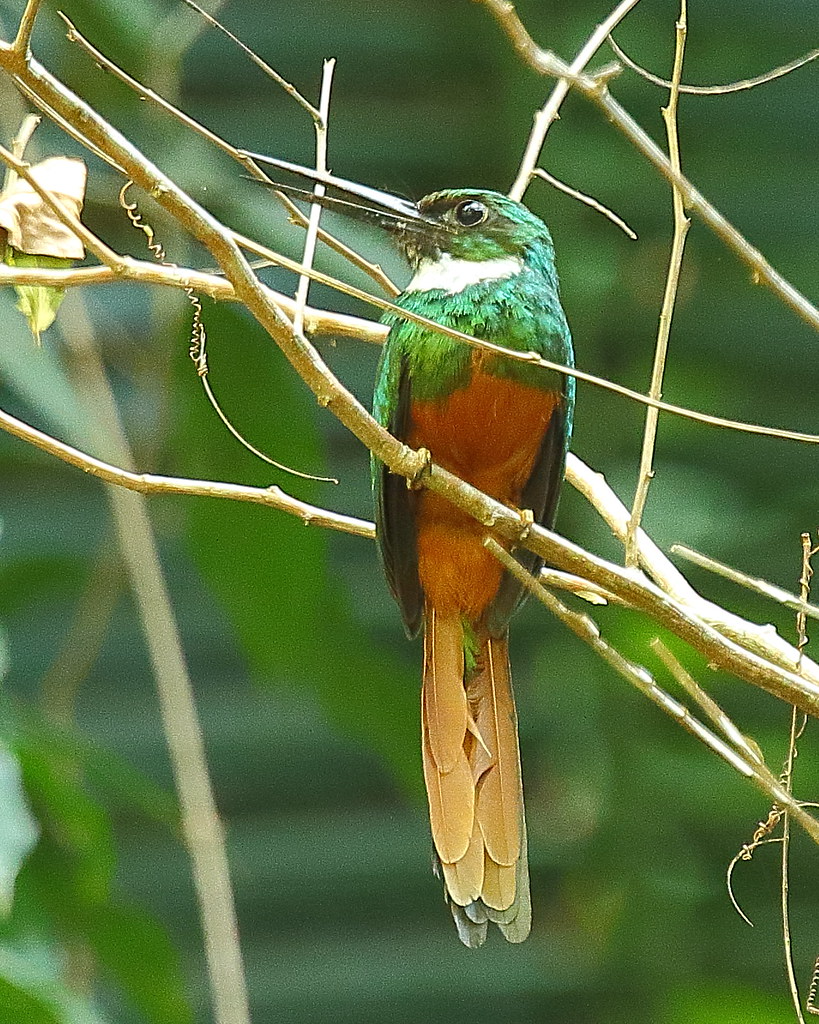
“Rufous-tailed Jacamar” by ryanacandee is licensed under CC BY 2.0.
The Rufous-tailed Jacamar can be found in various habitats, including shrubby forest edges, gallery forests, second-growth thickets, streams and riverside banks, marshes, and savannahs with scattered trees. Its range extends from lowlands up to an elevation of 900 meters, occasionally reaching 1300 meters.
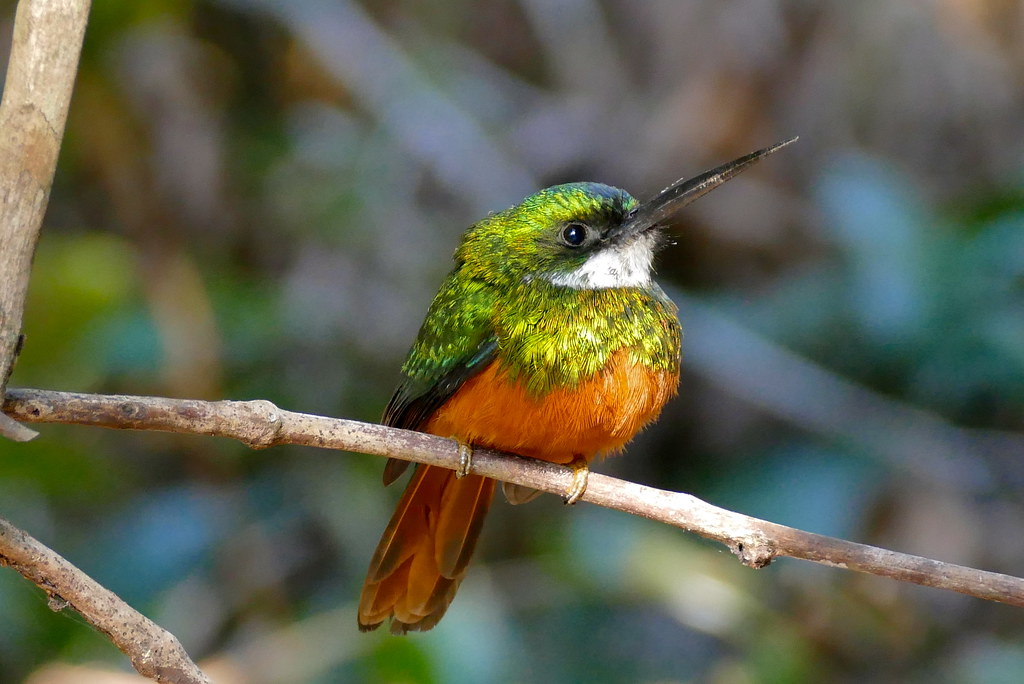
The Rufous-tailed Jacamar primarily feeds on insects, catching them in flight through flycatching, aerial sallies, or pursuit. When capturing prey, it often beats it against a branch or hard surface to kill it and remove indigestible parts before swallowing. This behavior is typically observed when dealing with relatively large prey. The bird hunts from exposed perches.

In terms of vocalizations, the Rufous-tailed Jacamar produces a sharp, thin call that is repeated 3 to 10 times by both sexes. It also utters a rapid trill. The male’s song is a series of several notes ending in a trill, with variations that can include melodious or buzzy sections, twittering, ascending trills, and low “pee-pee-pee” sounds.

The Rufous-tailed Jacamar possesses swift flight, which is relatively brief during prey pursuit. When it needs to cover longer distances, such as escaping from danger or moving between feeding areas, it utilizes rapid wing beats combined with gliding. This flight pattern appears undulating.
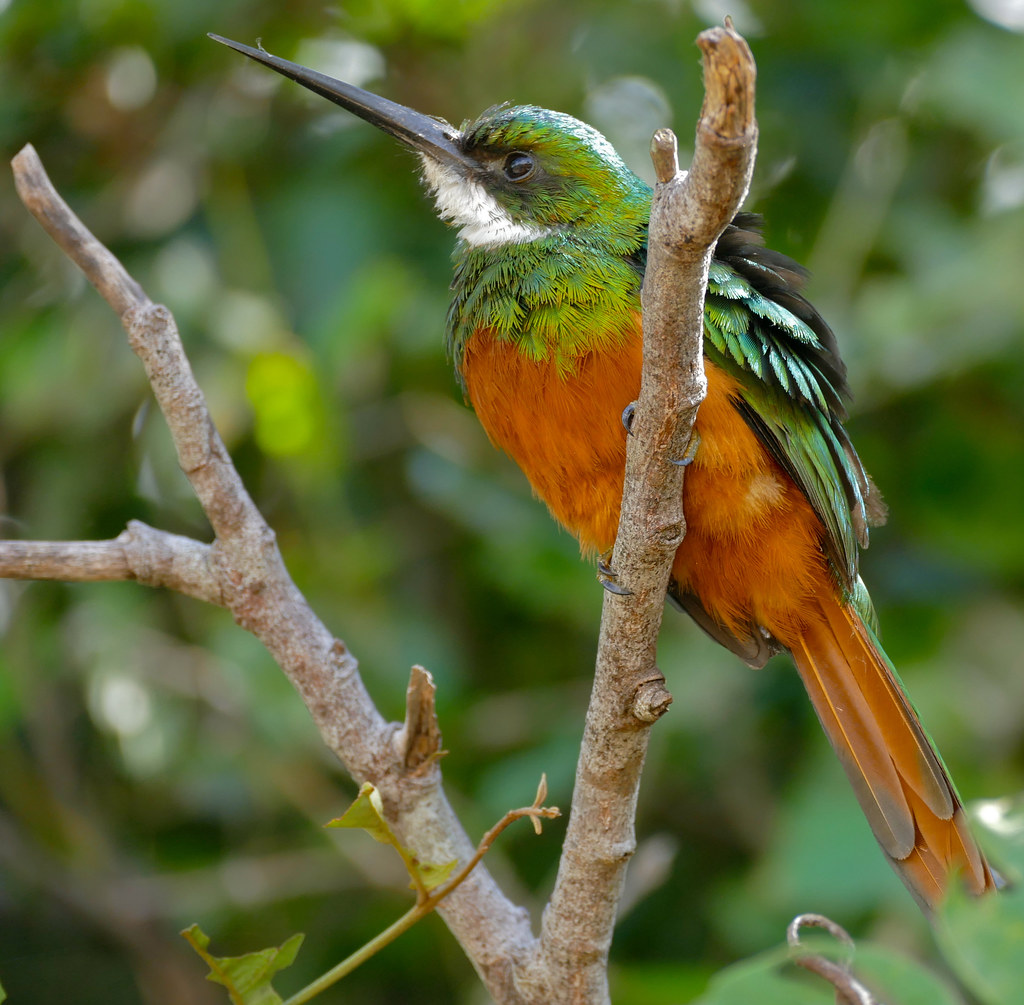
During the breeding season, the male engages in courtship feeding, catching insects to offer to the female without wings or hard parts. Both mates perch closely together, with the male performing head-bobbing motions in various directions and swinging its tail up and down. The male produces low notes while the female trills. Additionally, they may fan their tails and bow together at times. The species nests in burrows that are excavated by both males and females. These burrows are typically located in sandy banks, termite mounds, and sometimes in the higher roots of fallen trees, ranging from ground level up to three meters high. The burrows are usually straight, with the nest chamber occasionally visible. If obstructions such as roots are encountered, the angle of the burrow may deviate sideways or downwards. The entrance to the burrow is usually rectangular with vertical sides. The burrow extends to a depth of approximately 20 to 50 cm, with a terminal nest chamber that remains unlined.
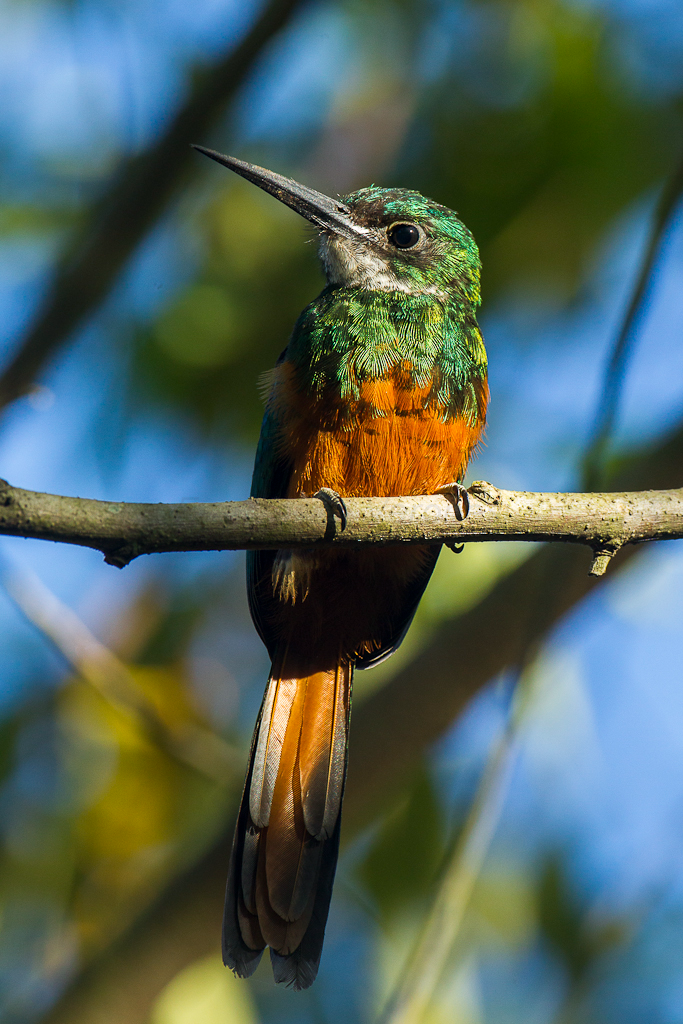
“Rufous-tailed Jacamar – REGUA – Brazil_S4E0804” by fveronesi1 is licensed under CC BY-SA 2.0.
The female Rufous-tailed Jacamar lays 2 to 4 white eggs. Incubation is shared by both parents and lasts about 19 to 23 days, with the female primarily incubating at night. The parents communicate through calls and displays during each changeover in incubation duties. Once hatched, the chicks are covered in long whitish down and are fed by both adults with insects captured within approximately 50 meters from the burrow. The young fledge around 20 to 26 days after hatching. After fledging, both adults and young roost in the burrow at night for about 8 weeks. The species typically produces one brood per season, although there may be instances of two broods.
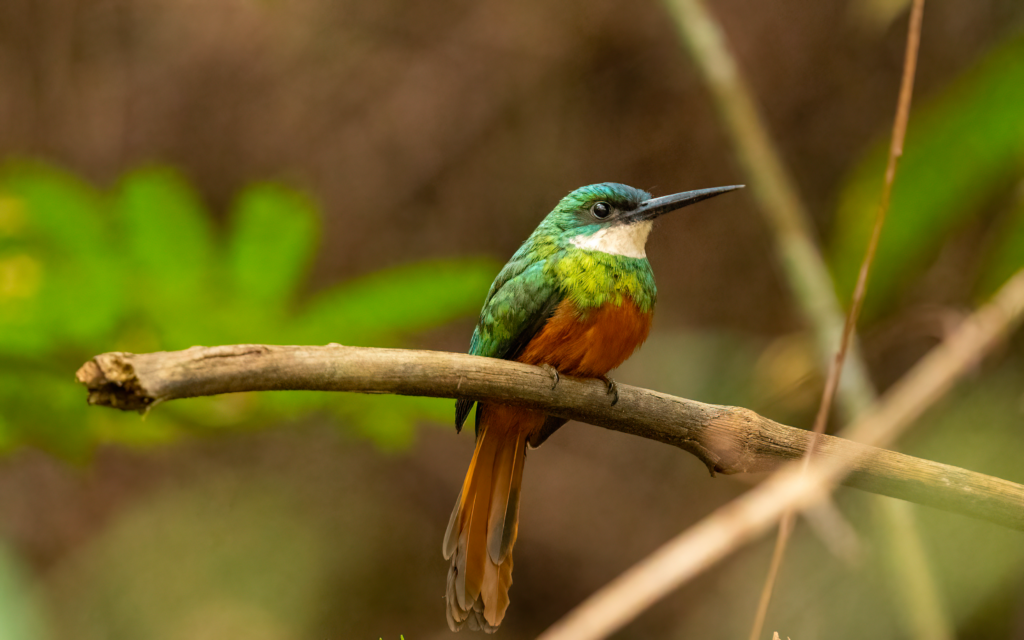
“Rufous-tailed Jacamar, Chapada dos Guimarães, Mato Grosso (52302974951)” by Kandukuru Nagarjun from Bangalore, India is licensed under CC BY 2.0.
Rufous-tailed Jacamars are common and widely distributed within their range. The major threats to this species are deforestation and habitat loss. Currently, Rufous-tailed Jacamar populations are not considered threatened.
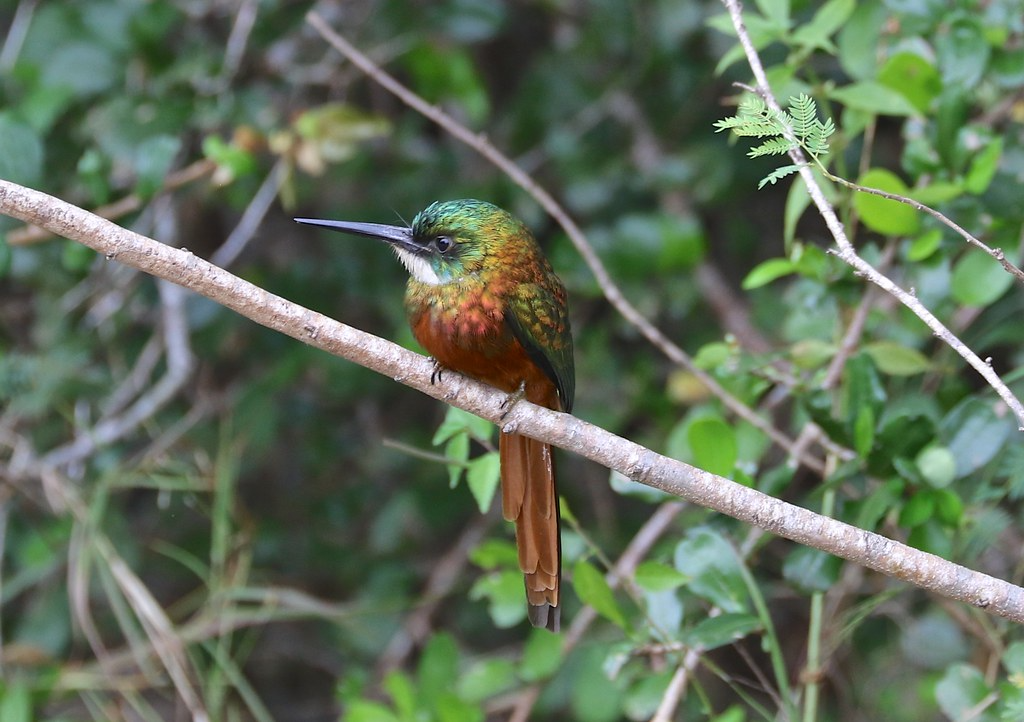
“Rufous-tailed Jacamar” by bjornlundquist77 is marked with CC0 1.0.





